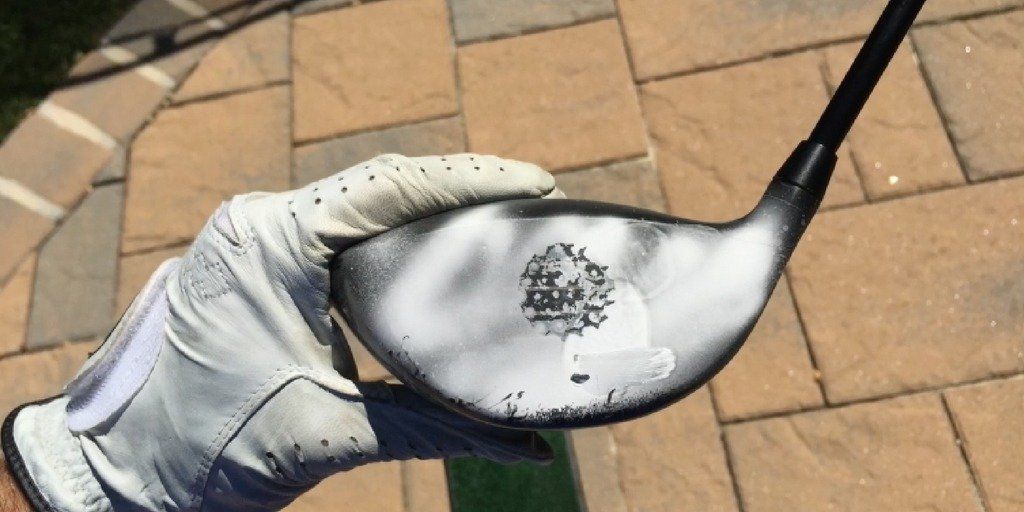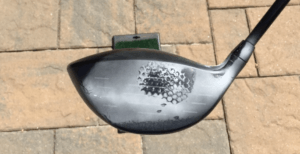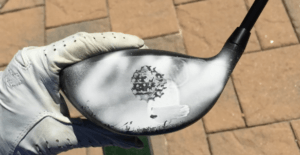
Every golfer wants to know how they can hit their driver farther. Sometimes the answer can be very simple and is as easy as changing your setup on the teebox. In this article I will talk about driver tee height, and how you can find the right one for your particular swing.
Getting the right driver tee height can potentially add serious distance to your drives. It sounds like a gimmick, but it's not. Many golfers go to extremes with their tee height, and either go too low or too high. One thing I want to make clear is that there is no "right" tee height for all players.
I'm going to explain to you a little bit about your driver head, and how where you make impact on the face will affect your distance. Then I will show you a brief little test you can perform at the driver range to help with this.
Your Driver Has Different Lofts
Most golfers don't know this, but your driver head has a bunch of different lofts on it. The number stamped on the head represents the loft somewhere in the middle of the face. The loft decreases as you go lower on the face of the driver, and increases as you move towards the top.
For example, your driver might be 10 degrees somewhere around the middle - but the bottom of the club might have a loft of 7.5 degrees versus as high as 13-14 degrees on the top.
Why does this matter?
There is a concept known as gear effect, which makes your impact point on the driver face very important. I discussed it more in this article, and without getting too scientific this is what occurs with vertical gear effect:
If you strike the ball lower on the face of the driver, it will increase your spin rate and decrease your loft. This is an absolute distance killer because it will result in lower, spinning drives that will not go as far.
If you strike the ball higher on the face, it will increase your loft but decrease the amount of spin on the ball. Launching it higher with less spin is the key to hitting it farther for many players, but you don't want to go to extremes and hit it too high on the face of the driver either. Typically just above the sweet spot is where you are going to get the optimal launch conditions, and you can get those towering drives that seem to travel farther.
How to Find the Right Driver Tee Height
Your golf swing has a major affect on where you will strike the ball on the face of the driver, but for the purposes of this article I want to talk about how a change in your setup can help accommodate the current swing you have.
Doing some experimentation with your driver tee height can help solve this problem for you, and it's quite simple.
Get yourself a few cans of Dr. Scholls Odor X spray and spray the face of your driver before you take a few swings. You'll quickly see where you are making contact on the face (this is a drill you should always do in your practice sessions anyway).
Start to experiment with different tee heights and see what happens. Go low, medium, and then extremely high. You'll begin to notice if you are striking the ball lower or higher on the face. You are looking for a general pattern; it won't be exactly the same every time.
I've done this test several times with my own swing, and figured out that teeing it too high will result in a strike a bit too high on the face, which you can see in this image:

If I go a bit lower then I find I am able to get that spot just above the center of the face that will give you a little extra loft and decreased spin - this is the ultimate goal:

You are essentially trying to remove the extremes. Your golf swing is never going to repeat perfectly, but if you can determine that a certain tee height will help you avoid hitting it way too high or too low on the face, then you will most likely see more consistent results on the course.
Once you have found the height that works for you, buy some of these plastic tees and mark exactly where that is so you can easily reproduce it on the course without much effort.
Bonus Content - if you want to learn how to maximize your driver distance please check out my complete guide here.
We care about the protection of your data Read our Privacy Policy